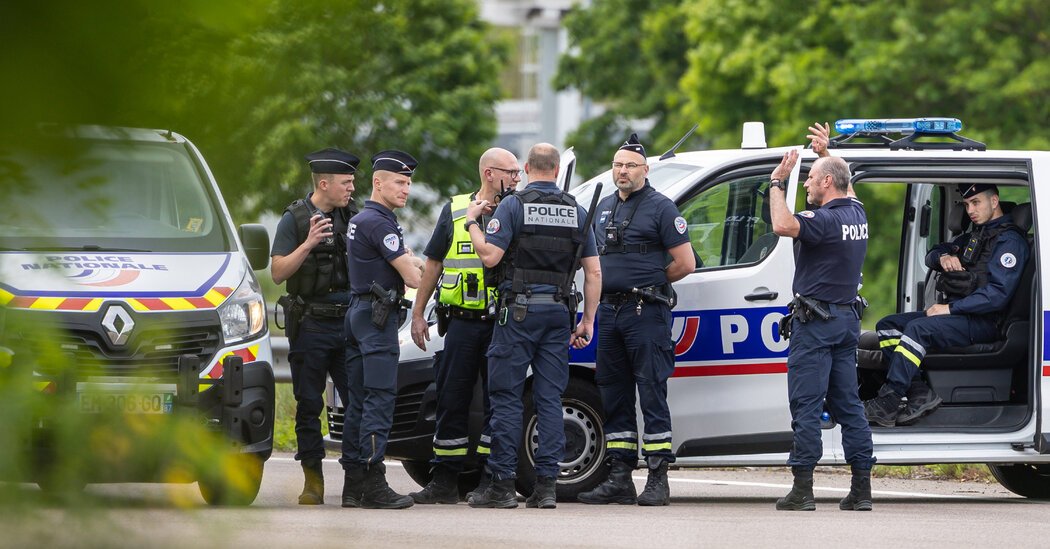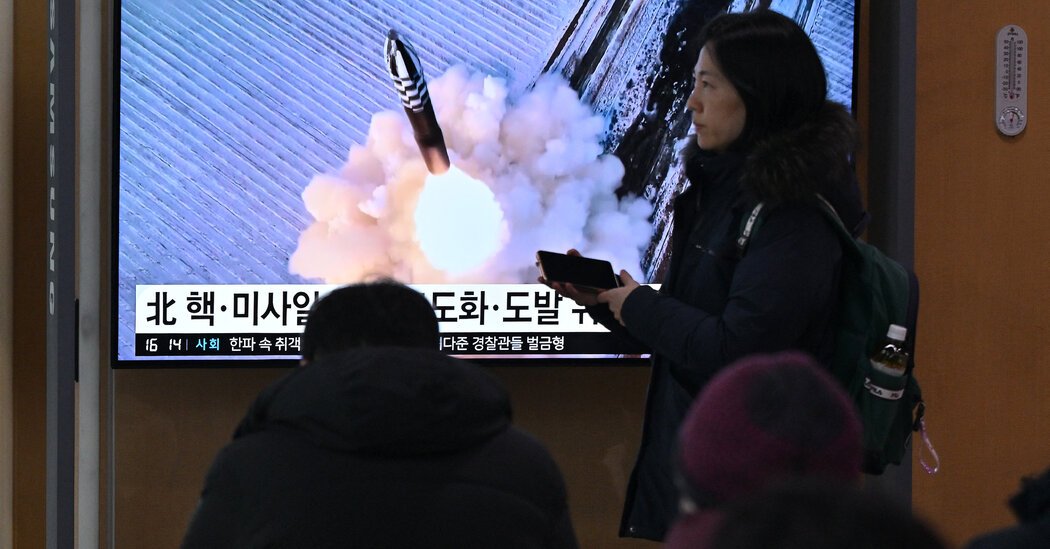Dozens of investigators scoured the crime scene in northern France. More than 450 police officers combed the countryside and the surrounding area. Interpol issued an alert.
French officials said they would “spare no effort or means” to track down heavily armed assailants who ambushed a prison convoy in a brazen daytime attack, killing two guards and freeing an inmate.
But three weeks into an extensive manhunt, the suspects are still on the run.
The case has raised uncomfortable questions about whether France’s justice system fully grasped how dangerous the inmate was and if its overburdened prisons had played a role.

The authorities have been tight-lipped, declining even to specify how many people participated in the attack. But they say their investigation has made progress.
Laure Beccuau, the top Paris prosecutor, told Franceinfo radio last week that the authorities had “a number of leads that I would describe as serious.” She did not elaborate, saying only that the ambush had been well-organized, and that the suspects appeared to have planned hide-outs.
The attackers vanished in stolen cars that were later found burned. Experts say it is only a question of when, not if, they are captured.
“It always takes a bit of time,” said Christian Flaesch, the former head of the Paris police criminal investigations department. But in the end, he added, fugitives “are almost all caught.”
Violent prison breaks are rare in France. The two prison guards who died in the attack last month, at a highway tollbooth about 85 miles northwest of Paris, were the first to be killed in the line of duty in 32 years.
“This violence is quite unprecedented,” said Brendan Kemmet, a journalist and author of books about France’s most famous prison escapees, including Antonio Ferrara and Rédoine Faïd, notorious armed robbers who both staged separate jailbreaks involving helicopters, in 2003 and 2018.
Mr. Ferrara was caught after four months on the run; Mr. Faïd, after three. How long the inmate who escaped last month, Mohamed Amra, will evade capture is an open question.
“He’s now France’s most wanted man,” Mr. Kemmet said.
Mr. Amra, 30 — also known as La Mouche, or The Fly — had been sentenced to 18 months in prison for burglary, one of more than a dozen convictions for crimes including extortion and assault.
But he was also under investigation on more serious charges — in Marseille, in connection with a kidnapping and homicide, and in Rouen, in connection with an attempted homicide and extortion case. His lawyer declined to comment for this article.
The Interpol alert — a red notice — could indicate suspicions that Mr. Amra has fled France. Experts said a flight abroad could not be ruled out, but noted that the ambush occurred about 125 miles from the nearest border, and that Mr. Amra was native to the Rouen region, where he was being detained before the attack.
Criminals on the run “tend to fall back on familiar ground,” Mr. Flaesch said.
Fugitives can evade detection by holing up and using a network of criminal or personal acquaintances to stay supplied. But those networks are likely now under close watch — phones tapped, trips tailed, routines scrutinized for unusual activity.
Guillaume Farde, a security expert who teaches at Sciences Po university in Paris, noted that an unusually large pizza order helped police eventually track down the Brussels hide-out of Salah Abdeslam, who helped carry out the November 2015 attack that killed 130 people in the French capital.
“The only way to escape from a manhunt, even temporarily, is to stop moving,” Mr. Farde said. “Until someone in the entourage either makes a mistake or gives information — or both.”
Mr. Abdeslam was taken into custody after a shootout; he had spent four months on the run. But Mr. Abdeslam did not have a business to manage, and experts said Mr. Amra may find it harder to stay under the radar.
The authorities initially described Mr. Amra as a midlevel criminal whose profile did not match the risky ambush. But details of the investigations that involved him, published in French news outlets, have come to paint a different picture.
Based on leaked police reports and phone tapping records, Le Parisien and BFMTV reported that Mr. Amra had juggled cellphones from behind bars to run schemes that they said included drug trafficking and kidnappings for ransom. He also tried to buy assault rifles while in prison, the reports said.
Éric Dupond-Moretti, France’s justice minister, acknowledged before Parliament last week that Mr. Amra had shown signs of “dangerousness” that “did not seem to have been taken into consideration.”
He has ordered an internal investigation into the prison administration’s handling of Mr. Amra — even as questions swirl about coordination between other branches of the justice system.
In a guest essay in Le Monde, two top judges, Béatrice Brugère and Jean-Christophe Muller, referenced the case and said efforts to combat organized crime in France were split between law enforcement units that did not always cooperate adequately.
Mr. Amra was targeted by separate investigations in different jurisdictions. If those inquiries had been merged, the judges wrote, “the true extent of the dangerousness of this criminal and of his supporters” would have been clear.
It remains unclear whether police investigators in Marseille and Rouen had shared any information with prison officials, who had increased security for Mr. Amra’s convoy but not to the maximum level.
Still, the case has brought attention to a French prison system that is bursting at the seams.
France’s official prison watchdog warned recently that incarceration rates were reaching highs every month: There were nearly 77,500 inmates in April, but room for fewer than 62,000. That has led to overcrowded and unsanitary cells and violence, the watchdog says.
“We’ve been chronically understaffed for the past 10 to 15 years, and recruitment isn’t making up for job vacancies,” said Wilfried Fonck, a representative of UFAP-UNSA, a prison guards’ union that staged protests after Mr. Amra’s escape. “And on the other side, the prison population goes up every month.”
The reports about Mr. Amra conducting business from behind bars did not surprise Mr. Fonck. Drones have delivered phones to prisoners in the past, he noted, and guards were barred from searching inmates leaving visiting rooms, making it easier for contraband to slip in.
Mr. Dupond-Moretti, the justice minister, has said that the government will work to address the issues highlighted by Mr. Amra’s case by deploying more anti-drone and phone-scrambling tools in prisons. It also will consider allowing more systematic searches and the use of videoconferencing to avoid unnecessary transportation of inmates, he said.
Unions are hopeful that the government will follow through, but cautious.
“Prisons have been sick for 30 years,” Mr. Fonck said. “Not since yesterday.”










